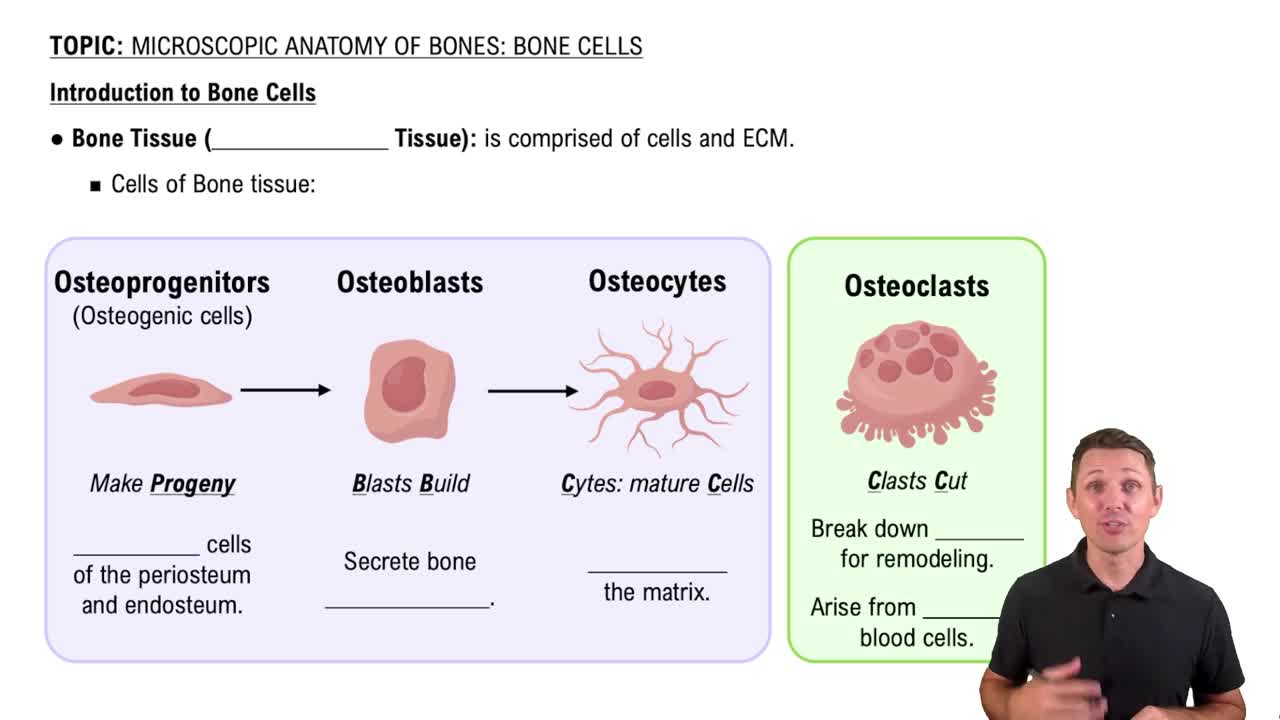Here are the essential concepts you must grasp in order to answer the question correctly.
Bone Remodeling
Bone remodeling is a continuous process where old bone tissue is replaced by new bone tissue. This process involves two main types of cells: osteoblasts, which build new bone, and osteoclasts, which break down old bone. It is essential for maintaining bone strength and mineral homeostasis throughout an individual's life.
Recommended video:
Introduction to Bone Cells
Hormonal Regulation
Hormones play a crucial role in regulating bone remodeling. Key hormones include parathyroid hormone (PTH), which increases blood calcium levels by stimulating osteoclast activity, and sex hormones, which help maintain bone density. Thyroid hormones also influence bone metabolism, while growth hormone promotes overall growth and development, including bone growth.
Recommended video:
Mechanical Stress
Mechanical stress refers to the forces exerted on bones during physical activity. This stress stimulates bone formation through a process known as mechanotransduction, where bone cells respond to mechanical loading by increasing bone density and strength. This concept highlights the importance of physical activity in maintaining healthy bones.
Recommended video:
Internal Regulation - The Myogenic Mechanism
 Verified step by step guidance
Verified step by step guidance


